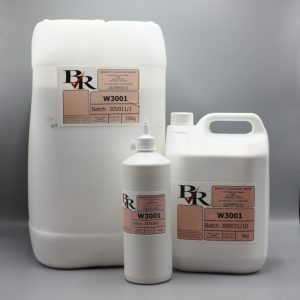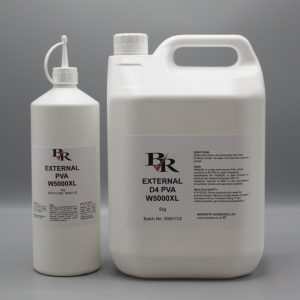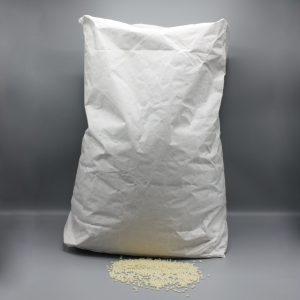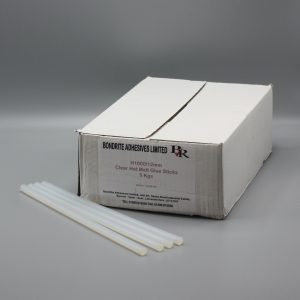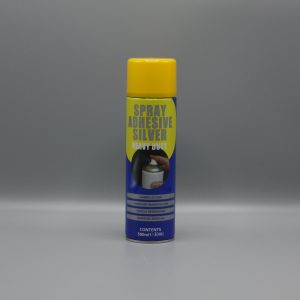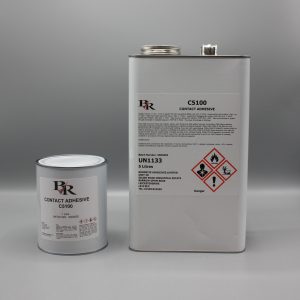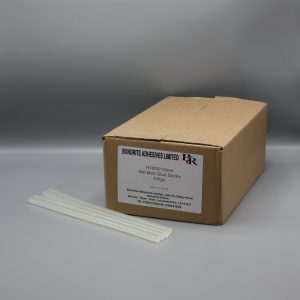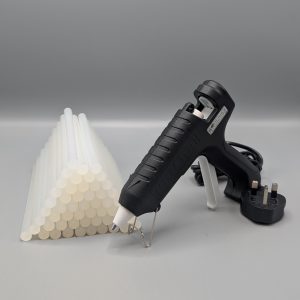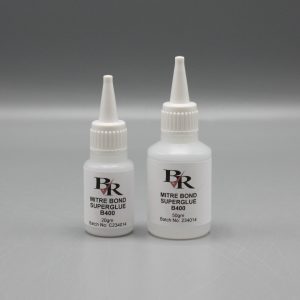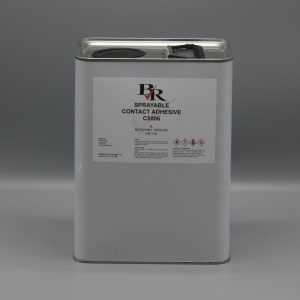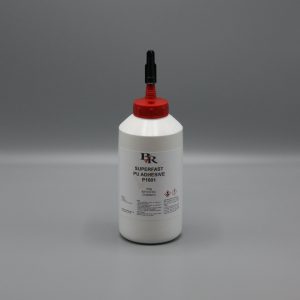Woodworking & Joinery Adhesives
We stock a full range of PVA’s, contact adhesives, polyurethanes, hot melts, cyanoacrylates (industrial superglues), silicones and MS Polymers covering every application method and speed of cure.
If you are spreading, rollering, spraying, machine applying or simply hand applying we have the right product for you to match your application method and speed of cure requirements along with many applicators for a one stop shop facility.
For bulk volumes or large quantities please call the office on 01509 815550 for a bespoke quotation.
Showing all 14 results
-
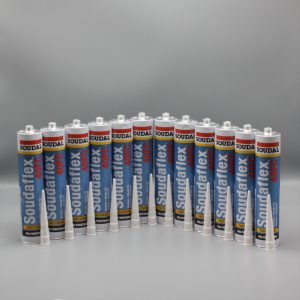
310ml PU Panel Adhesive – Soudaflex 40FC – Box of 12
£86.40 Add to basket -

Adhesive spreader pack of 5
£6.00 Add to basket -

Cyanoacrylate Activator B1001
From: £11.08 Select options This product has multiple variants. The options may be chosen on the product page -

D3 Wood PVA Adhesive – W3001
From: £10.02 Select options This product has multiple variants. The options may be chosen on the product page -

D4 Wood Glue External PVA Adhesive – W5000XL
From: £11.93 Select options This product has multiple variants. The options may be chosen on the product page -

Edge Banding Hot Melt Adhesive – H1300
£164.72 Add to basket -

General Purpose Hot Melt – H1000 – 5KG
£61.49 Add to basket -

Heavy Duty Contact Adhesive Spray – M1600 – 500ML
£7.04 Add to basket -

High Performance Hot Melt Adhesive – 5KG – H1002
£86.88 Add to basket -

Hot Melt Applicator Gun & 1kg Hotmelt HMG600PK
£31.97 Add to basket -

Mitre Bond Superglue B400
From: £7.32 Select options This product has multiple variants. The options may be chosen on the product page -

Sprayable Wood Contact Adhesive – C5006 – 5 Litre
£75.06 Read more -

Superfast Woodworking PU Glue – P1001 – 750g
£17.11 Add to basket
Woodworking Adhesives Explored
Woodworking adhesives are an essential part of any woodworking project and can be used with many hand tools and power tools, as well as wood fillers, building materials, sheet materials, and wood stains really well. Whether you are building a piece of furniture, repairing a broken chair from hardwood, or creating a new project from treated timber – the right adhesive can make all the difference. In this category, we stock many of the most popular types of wood working adhesives, including some premium wood glues. If you aren’t sure which adhesives are right for you, we can help you determine which ones are right for your applications and how they are used in different woodworking applications.
Types of Woodworking Adhesives Available on the market
There are many different types of woodworking adhesives available on the market, from ones that have great water resistance to ones that have a high bond strength and can be used with door frames. Each type has its own unique properties and characteristics, making it suitable for different woodworking applications. Some of the most common various types of woodworking adhesives include for instance:
PVA (polyvinyl acetate) Glue
This PVA wood glue is a water-based adhesive that is popular among woodworkers due to its ease of use and versatility. It dries clear and can be sanded, painted or stained after it has cured.
Cyanoacrylate (CA) Glue
CA glue, also known as “super glue,” is a fast-drying adhesive that is great for small woodworking projects. It is best used on non-porous surfaces and can be difficult to remove once it has cured.
Hot Melt Adhesive
Hot melt adhesive is an easy-to-use adhesive that is well suited to use in furniture and upholstery. It is fast drying and adheres to a good range of materials such as timber and foams.
Contact Adhesive
Contact adhesive is a brushable adhesive that is a good choice when large areas require coverage. It forms a strong permanent bond between wood, material and even cork, making it the adhesive of choice for interior trimming in the automotive, marine and transportation industries.
Polyurethane Glue (PU)
PU glue is a water-resistant adhesive that is ideal for outdoor woodworking projects. It is an adhesive that expands as it cures, filling gaps and providing a strong bond.
Uses of Woodworking Adhesives
Woodworking adhesives are used in a variety of applications, from bonding two pieces of wood together to repairing cracks and splits in wooden furniture. Some common uses of woodworking adhesives include:
Edge Gluing
Edge gluing involves joining two or more pieces of wood together to create a larger panel or board. PVA glue is commonly used for edge gluing due to its strong bond and ease of use. For larger projects edge banding hotmelt is the preferred choice for use on semi-automatic edge banders.
Doweling
Doweling involves inserting wooden dowels into two pieces of wood to create a strong joint. PVA glue is often used to secure the dowels in place.
Repairing Cracks and Splits
Woodworking adhesives can repair cracks and splits in wooden furniture. PU glues, due to their strength and durability, are often used for these types of repairs.
Laminating
Laminating involves gluing multiple layers of wood together to create a thicker, stronger piece of wood. PVA glue and contact adhesives are commonly used for laminating as they are easy to spread across large areas.
How to choose the right woodworking adhesive?
Choosing the right woodworking adhesive is essential for a successful project. Factors to consider when selecting an adhesive include the type of wood being used, the conditions the project will be exposed to, and the strength required for the joint.
In general, PVA glue is a good all-purpose adhesive that can be used for a variety of woodworking applications. However, for outdoor projects, take care to select a waterproof PVA adhesive or a PU glue. For projects that require a very strong bond, contact adhesive is often the best choice.
Can woodworking glues be used on other materials besides wood?
Absolutely. Some woodworking glues, such as PVA glue, can be used on other porous materials, such as paper or fabric. Hot melt can also bond foam and ABS. Contact adhesives and cyanoacrylates can also bond plastics, metals and rubber. PU adhesives are suitable for use on all usual building substrates, metals and polyesters.
How strong are woodworking glue joints?
The strength of woodworking glue joints depends on various factors, including the type of glue used, the preparation of the surfaces being bonded, and the conditions the project will be exposed to. In general, a well-prepared joint using a strong adhesive such as contact or PU glue can be as strong as the wood itself.
Can woodworking glues be used for outdoor projects?
Yes, some woodworking glues, such as external PVA and PU glue, are designed specifically for outdoor use and can withstand exposure to water and weather.
How long does it take for woodworking glue to dry?
The drying time for woodworking glue will depend on the type of glue and the conditions in which it is being used. In general, Hot melt and cyanoacrylates will dry within minutes, PVA glue will dry within a few hours, while contact and PU adhesives may take several hours or even days to dry completely.
Can woodworking glue be removed if a mistake is made?
Yes, it is possible to remove woodworking glue if a mistake is made. PVA glue can be softened with heat and then scraped away, while CA and contact glues can be dissolved with solvents. Hot melt and PU glue may be more difficult to remove and may require sanding or scraping.
Can woodworking glue be used for furniture repair?
Yes, woodworking glue can be used for furniture repair. In fact, it is often the best choice for repairing joints in furniture as it will bond the wood strongly and permanently.
How long does woodworking glue last once it has been opened?
This will depend on the type of glue and the conditions in which it is stored. In general, most woodworking glues will last for several months to a year once they have been opened, provided they are stored properly and kept tightly sealed. It is important to check the manufacturer’s recommendations for storage and usage.
What are the most common types of woodworking glues?
The most common types of woodworking glues include PVA (polyvinyl acetate) glue, hot melt, cyanoacrylate (CA) glue, contact adhesive and polyurethane (PU) glue.
How do I choose the right woodworking glue for my project?
The choice of woodworking glue will depend on a variety of factors, including the type of wood being used, the conditions the project will be exposed to, and the strength required for the joint. In general, PVA glue is a good all-purpose adhesive, while contact adhesive is best for very strong bonds, and PU glue is ideal for outdoor projects.
How do I use woodworking glue?
Woodworking glue should be applied to a clean, dry surface and spread evenly over the area to be bonded. The two pieces of wood should be pressed together firmly and allowed to dry completely according to the manufacturer’s instructions.
Can woodworking glue be sanded or stained?
This depends on the type of woodworking glue used. PVA glue dries clear and can be sanded, stained or painted once it has cured. CA glue dries hard and cannot be sanded, while PU glue may need to be sanded down to create a smooth surface.
How do I store woodworking glue?
Woodworking glue should be stored in a cool, dry place and kept tightly sealed when not in use. To ensure the glue remains effective, it is important to follow the manufacturer’s instructions for storage and usage.
Are woodworking glues safe to use?
Woodworking glues are generally safe to use, but it is important to follow the manufacturer’s safety instructions, including wearing protective gear such as gloves and eye protection when handling the glue. Some types of woodworking glue may emit fumes that can be harmful if inhaled, so it is important to work in a well-ventilated area.
Woodworking glues overall
Woodworking adhesives are an essential part of any woodworking project. Whether you’re building a piece of furniture or repairing a broken chair, the right adhesive can make all the difference. By choosing the right adhesive for the job, you can ensure a strong, durable, and long-lasting bond.
About Bondrite Adhesives
Here at Bondrite, your adhesive needs are our top priority!
Consequently, as a dedicated family-run business with decades of experience in the industry, we are not just about selling adhesives; we’re about building lasting relationships, and we have a high level of customer service that we can provide you.
As a result, we understand that choosing the right adhesive is crucial for your project, company, and industry. That’s why we’re here to make it easy for you.
With Bondrite, you get more than just a glue or an adhesive. You receive a commitment to quality service.
Need Expert Advice?
Our friendly team is ready to discuss your requirements over the phone, meticulously review your technical drawings, and provide tailored recommendations where required.
If we are not the perfect fit for your needs, we will direct you to someone who is. We can also offer free delivery and quick UK delivery options. Don’t just buy adhesives – so choose Bondrite for a solution that sticks!



